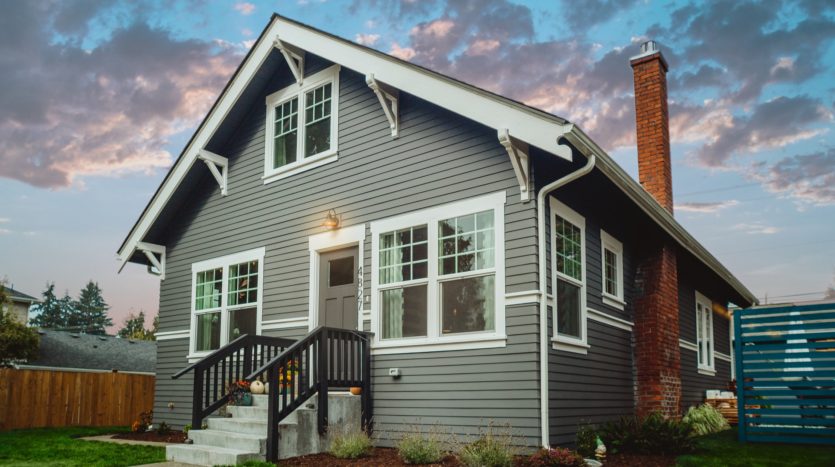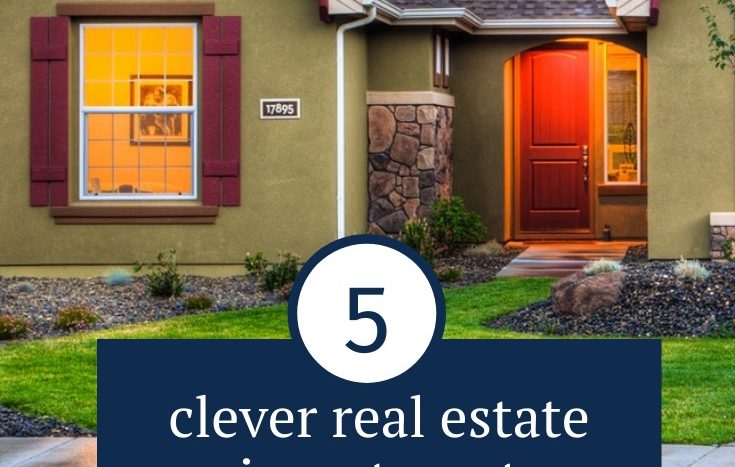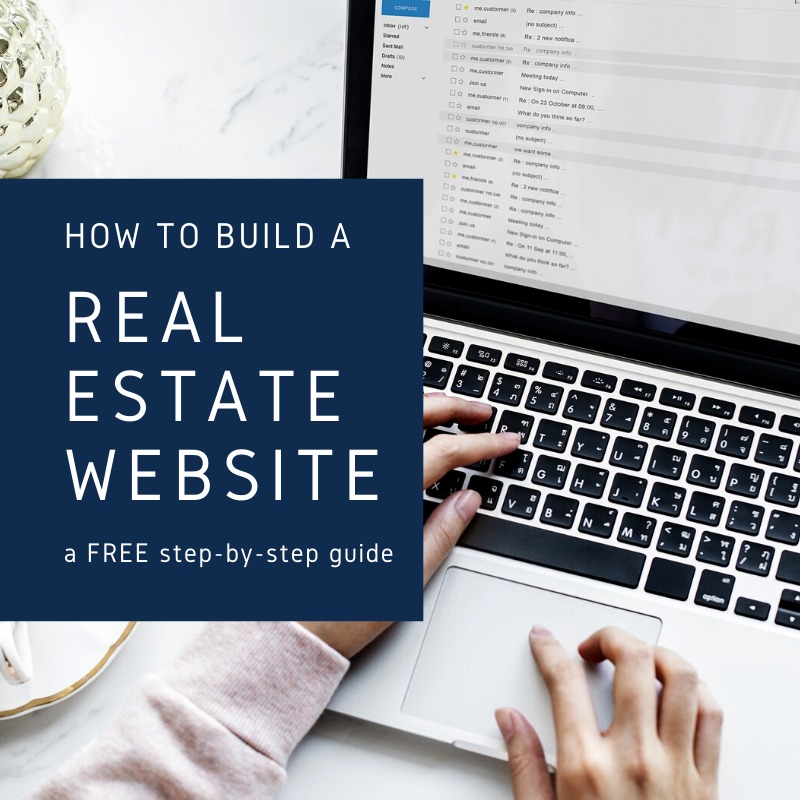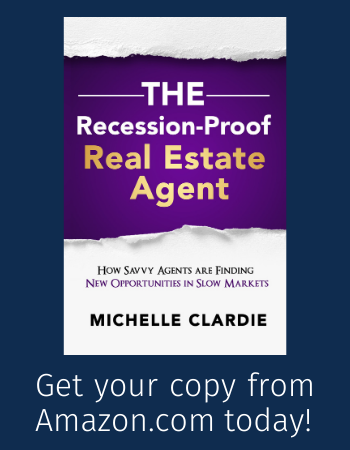While there are lots of different ways to invest in real estate (check out our list of 18 ways to invest in real estate!), real estate investment strategies for beginners are a little more limited.
If you’re brand new to real estate investing, you want to start with fairly simple, straight-forward real estate deals that expose you to as little risk as possible, right?
Those are the strategies we’re focusing on in this post. Here are 5 clever real estate investment strategies for beginners!
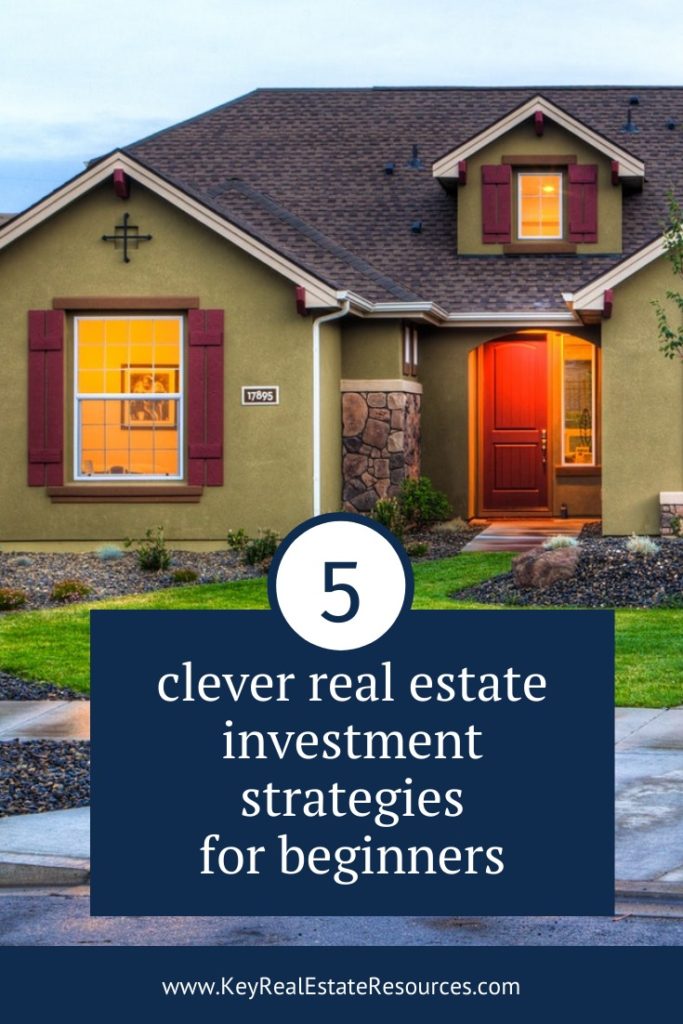
5 Clever Real Estate Investment Strategies for Beginners
Get ready to build your real estate empire…
1. House Hacking
House hacking is the new-ish term millennials are using to describe renting out part of your property to help offset the cost of your personal real estate ownership. Of course the concept is as old as real estate itself.
If you already own a property, this is the easiest way to turn your home into an income-generating investment. And there are several different ways to do this:
- Rent out storage spaces (garages, basements, attics, barns, even spare rooms).
- Find a renter for your spare room(s).
- If you’re lucky enough to have a property with a casita (sometimes called a granny-flat or in-law quarters), you can rent it out. And if you don’t already have a casita, maybe you could build one.
- If you don’t already own a property, consider buying a duplex, triplex, or fourplex instead of a single-family home. The rent from the other unit(s) could completely cover your mortgage payment, enabling you to effectively live in your home for free!
Key benefits of house hacking
Aside from the income, house hacking is great for teaching the basics of property management to new investors. You’ll be able to learn about rental contracts and tenant screening first-hand. Plus you’ll be on-site, so you’ll be able to address maintenance issues or tenant issues immediately. And you’ll be able to keep a close eye on your investment.
Plus, if the property serves as your primary residence, you might qualify for an FHA loan, which allows you to put as little as 3.5% down (instead of the standard 20% down payment). It just takes a little organization to stay on top of your rental(s), so make sure you invest in some inexpensive, but effective, property management software.
The downside to house hacking
The biggest downside to house hacking is that you’re always on call. But as a real estate professional, you’re used to that, right?
2. Live-In-Then-Rent
Of our 5 real estate investment strategies for beginners, live-in-then-rent has been my strategy of choice.
It’s simple: you buy yourself a home (careful to choose an area where the rents exceed the costs of ownership), and you live there for a few years. Then, when you’re ready to move, you rent that house out and buy a new house.
Thanks to my husband’s career in video game design, we move every few years (pretty much every time a project wraps). This lifestyle has prevented me from building a career as a real estate agent, but it allowed me to explore careers all over the real estate industry (brokerage administration, executive suite management, leasing, property management, property tax, etc) and find my niche as a professional real estate blog writer. (If you need a professional writer for your real estate blog, check me out!)
This lifestyle also made us perfect candidates for the live-in-then-rent investment strategy. Each time we move, we rent out our old house and buy a new one. Then we start saving again for the next round.
As a real estate professional, you’re probably firmly cemented in your community. But if you’re the type who likes a change of scenery every few years, you could still make this strategy work for you on a local level. And you could get even greater returns on your investments by purchasing fixers (total fixers or just those in need of cosmetic updates). Making these updates while you live in the home will allow you to charge higher rental rates for this home when you move on to the next home.
Key benefits of live-in-then-rent
Since you’re purchasing each property as your primary residence, you may qualify for an FHA loan on each residence. So instead of paying the standard 20-30% down for an income property, you could buy each property with as little as 3.5% down. You’re basically buying investment properties on the much-more-favorable primary residence terms! This is how we were able to purchase homes in expensive markets like LA and San Diego.
And, unlike with house hacking, you don’t have to share a property with your renters. So you get a little breathing room. Of course you could always hire a property manager if you wanted the income to be completely passive. But, really, as long as the homes are in good repair, and you screen for responsible tenants, the management should be relatively minor. I’ve been able to manage our small portfolio myself, even when my husband’s latest job took us abroad for a few years.
The downside to live-in-then-rent
You need to be good with money to make the live-in-then-rent strategy work. When you’re going to buy a new home every 3-5 years, you’re constantly saving money for your next down payment. But again, since you can get a low down payment on primary residences, you’re able to leverage a lower investment to buy income-producing assets.
Also, since you won’t live on-site, you won’t be able to keep a super close eye on the property. Make sure to do a thorough renter screening to find reliable and responsible tenants!
3. Live-in Flip
Of course you’re familiar with flips: buy a property, fix it up, resell it at a much higher price.
The problem with those flips is that they have to be resold quickly. Every day the house sits vacant, you’re losing money. These flips rely heavily on market conditions, which creates a fair bit of risk. If your market slows mid-flip, you could even end up losing money on a deal.
The live-in flip is an option with lower risk. Instead of flipping the property in a matter of months, you can live in the property for a few years, taking your time to leisurely renovate.
Key benefits of live-in flips
You get the low down payment options since the house will be your primary residence. And you don’t have to deal with any renters ever.
Plus, you’ll save money by doing the remodel work yourself since you’re not in a rush. And since the project can be spread over time, you don’t need to pay for the complete renovation upfront.
The downside to live-in flips
Any time you’re flipping, you’re counting on the market to be good when the time comes to sell. Buy low, sell high. If the market happens to be on a down-cycle when you want to sell, you might be stuck. But you have options. You could continue using the property as your primary residence until the market rebounds or you could use the property as a rental, and take advantage of the depressed market to snag another property at a low price.

4. The BRRRR Strategy
BRRRR stands for Buy, Remodel/Rehab, Rent, Refinance, Repeat.
Here’s how it works:
- you buy an under-priced fixer using short-term financing
- then you remodel the property and rent it out,
- once the property is stable, you refinance for a longer-term mortgage, the goal being to cash out as much of your original investment as possible so you can repeat with another property.
This is, admittedly, the most complicated of our 5 real estate investment strategies for beginners. But, as real estate professionals, you already understand real estate financing and you understand market corrections, so you’re already fairly well qualified to jump into BRRRR investing. And it’s a good option for beginners because it allows you to build a sizeable real estate portfolio with minimal upfront capital.
As you become a more experienced investor, you may decide to shake up your BRRRR portfolio to relieve yourself of some of the debt acquired through this strategy. But the fact remains: BRRRR can get you to an elite real estate investor level faster than any other strategy we can think of.
Key benefits of BRRRR
The greatest benefit of BRRRR is the ability to build a substantial real estate portfolio quickly and with relatively little upfront capital.
The downside to BRRRR
The downside to minimal upfront capital is that you’re leveraging a whole lot of debt. Now, I love smart debt, but it is possible to be over-leveraged. Once you get a handful of properties in your portfolio, you may want to focus on building equity in those properties by paying down some of the debt before jumping into another new deal.
5. Investing Without Buying Property
The final option on our list of clever real estate investment strategies for beginners doesn’t require you to buy a property at all.
If the idea of buying property feels like too big a step for you, consider real estate investments that don’t actually require you to purchase a property.
There are several ways to invest in real estate without technically buying a property. Ways like:
- Real Estate Investment Groups and Crowdfunding
- REITs
- Mutual Funds and ETFs
- Real Estate Notes
- Hard Money Loans
- Tax Liens
Each of these are different; they all have their own strengths of weaknesses. But they’re worth looking into! You can start investing through some of these real estate investment strategies with as little as $500.
For more info on these real estate investment strategies, check out 18 Different Ways to Invest in Real Estate.
Key benefits of investing without buying property
You can get started with a comparatively small investment amount. And you avoid all the hassle of actually hands-on owning property.
The downside to investing without buying property
You do miss out on some of the satisfaction that comes from owning property. When you buy your own property, you have something tangible. With these real estate investments, you maybe just get an account statement every once in a while.
Real Estate Investment Strategy Resources
Want to learn more about real estate investment strategies? Here are a few excellent resources to teach you all about different real estate investment strategies for beginners:
The Millionaire Real Estate Investor (by Gary Keller) is hands-down my personal favorite book on real estate investing. This book is simple enough for total beginners to pick up, but advanced enough to help you build a plan for long-term investment success.
The ABCs of Real Estate Investing (by Ken McElroy) is a great read for all beginners because it presents several concepts for creatively making money through real estate. This will help expand your thinking on the topic of real estate investing in general.
What Every Real Estate Investor Needs to Know About Cash Flow (by Frank Gallinelli) is the best book I’ve found for investment calculations. If you’re a number-cruncher, this will give you lots of fun formulas to think about. And if you hate calculations and financials, this book will teach you to understand them, and maybe even appreciate them.
Also, if you’re looking to invest in real estate without actually buying property, here are a few books to help you get started:
- Note Investing Made Easier: How To Buy And Profit From Distressed Mortgages by Martin Saenz.
- The Complete Guide to Investing in REITs — Real Estate Investment Trusts: How to Earn High Rates of Returns Safely by Mark Gordon
- The Little Book of Common Sense Investing by John C. Bogle (covers general investments, including Mutual Funds and ETFs, which you can get specifically for real estate)
Do you know of any other real estate investment strategies for beginners? We’d love to get your thoughts. Leave us a comment!

